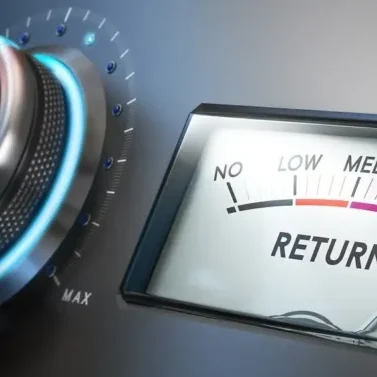LBO Case Study – Small Transportation Company
Summary: This article presents the case study of a leveraged buyout (LBO) applied to a small transportation company. Although this strategy is not mentioned in the small business press often, LBOs can be an effective way to buy a small company as well.
Since the company is private (rather than publicly listed), all the names have been changed to protect the privacy of the participants. Any resemblance to a person or entity is purely coincidental. This case study covers the following:
- The buyer
- The sellers
- Buyer finds the seller
- Leveraged buyout structure
- Getting financing in place
- SBA pre-qualification
- Final qualification
- Appraisals
- Closing the transaction
1. Buyers Transportation Inc.
Buyers Transportation Inc. is owned by Jeff Buyers. The company is a small trucking logistics business in a rural part of the southeastern United States. The company had experienced success and had the potential for substantial growth. Mr. Buyers was looking to acquire one or more transportation companies to help grow the company.
Buyers Transportation had an existing loan that was small relative to assets. However, existing loans can present a challenge to getting funding, since the new lender wants to have priority over all the assets.
2. Sellers Transportation LLC and Sellers Realty LLC
The sellers were John and Jane Sellers, who co-owned Sellers Transportation LLC. The company was also located in the rural southeastern United States. Sellers Transportation LLC owned all the trucks and equipment in the business. The couple also owned the building out of which the company operated. As is common in these situations, John and Jane created another entity to hold the building. In this case, the entity was Sellers Realty LLC. The sale price for the combined entities was set at $2,200,000.
John and Jane had been in the business for a couple decades and had amassed enough money to retire comfortably. They were looking to sell the business in order to start their retirement. However, they did not want to sell their business to just anyone. They wanted to sell their business to another person or company that would treat their customers well. This aspect of the sale was important to John and Jane, as they had longstanding relationships with their clients and genuinely cared for them.
3. The buyer finds the seller
Making the match was actually quite simple in this case. Both the buyer and the seller were located in the same region and knew of each other. When the buyer heard that the seller was looking to sell the company, he approached the seller and attempted to structure a transaction.
4. Leveraged buyout structure
The transaction encountered its first problem early in the discussions. Jeff Buyers had examined a number of business acquisition financing alternatives. External financing options usually require a down-payment of 10% to 20% of the sale price. Unfortunately, Jeff Buyers did not have this amount of cash.
What Jeff Buyers did have was a company with a lot of assets and a small loan. Furthermore, both Sellers Transportation and Sellers Realty had unencumbered assets. This scenario helped the business case for a leveraged buyout.
The financial team built a global debt-service model from the financials of Buyers Transportation, Sellers Transportation, and Sellers Realty to determine if there were enough funds to:
- Pay off existing debt
- Support a leveraged buyout
- Cover the costs to operate the business
After careful review, the team determined that the financials supported a leveraged buyout model. The business acquisition was structured so that Buyers Transportation would acquire the assets of both Sellers Transportation and Sellers Realty. This detail is important in this structure – they did not buy the companies, only the assets.
5. Getting financing in place
The leveraged buyout was financed using two vehicles:
- $900,000 of seller financing
- $1,300,000 SBA 7(a)-backed business loan.
SBA-backed loans are easier to get than conventional loans. The buyer and the finance team reviewed the requirements to qualify for a 7(a) loan and determined that they were a good fit for part of the transaction.
6. Getting pre-qualified for an SBA 7(a)
The first step in the process is to get a pre-qualification for the loan. To pre-qualify, the buyer and the seller had to submit the following items (note that the personal reports are submitted only by the buyer):
- Credit report
- Letter of intent
- Borrower information form (form 1919)
- Personal financial statement (form 413)
- Three years of personal and corporate tax returns
- Three years of business financial statements
- Debt schedule
- Resume and statement of management experience
- Proof of funds for down payment
Getting the pre-qualification in this case proved to be a challenge. The buyer had some "blemishes" in his background. The blemishes were two decades old and, thus, were considered "old and cold" by industry standards. However, they still could have prevented the financing from going forward. Consequently, the buyer also submitted an SBA form 912 (statement of personal history) to disclose this information.
Fortunately, the buyer received an approval shortly after submitting the application. Learn more details about how to get a business acquisition loan and its requirements.
7. Getting the final qualification for the SBA (7a)
A pre-qualification does not guarantee that the buyer will get funding. It merely shows that the buyer has a very good chance of getting funding if all the details of the transaction meet the underwriter's criteria. In this phase, details are extremely important and will make or break a deal. The next step is to get a formal approval for funding. Note that this process may vary by opportunity and by lender.
The finance team assembled a workbook to submit for formal approval. The workbook contained:
- Transcripts of all tax returns (using an IRS 4506-T form). Note that any tax returns that don't match the transcripts may have to be restated.
- A copy of business liability insurance coverage
- Copies of all insurance that covers assets
- Payroll information and tax submissions
- Workman's compensation coverage
- Copies of bank and merchant account statements
- Copies of all notes and titles
- Copies of all leases (e.g., buildings, vehicles)
- A copy of the asset sale agreement (this topic is covered in the LBO structure section)
Once the workbook was assembled, it was submitted to the credit committee. The credit committee could have taken up to two weeks to review this information. Once the review was over, there were three possible outcomes: approval, rejection, or a request for more information.
In the case of this transaction, everything was approved, so the committee issued a loan number and a formal approval letter.
8. Scheduling appraisals
The last step prior to closing this deal was to schedule the appraisals of all assets. In this case, appraisals were needed for the assets of:
- Buyers Transportation
- Sellers Transportation
- Sellers Realty
The appraisal was done to ensure that the value of all assets was as expected and that there would be sufficient collateral to fund the opportunity.
The appraisals took a week and they came in showing the expected values that would support the transaction.
9. Executing the leveraged buyout
The closing attorney worked with the borrower's attorney to get all the updated balances and to manage all liens/encumbrances so that the lender would get first priority on all assets. A simultaneous closing/funding was executed and the closing documents were managed by the escrow agent who handled the disbursement of all funds.
Need to finance a leveraged buyout?
The first step to work with us is to submit this form. Once we review it, one of our associates will contact you to discuss the specific details of your acquisition.
Additional resources: MBO Case Study - Aviation Company
Editor's note:
This information should not be considered legal or financial advice. Given the complexity of business acquisitions, this document is not guaranteed to be 100% accurate or cover every potential option. However, we make every effort to provide you with the best information. If you have comments, suggestions, or improvements, contact us via LinkedIn.






